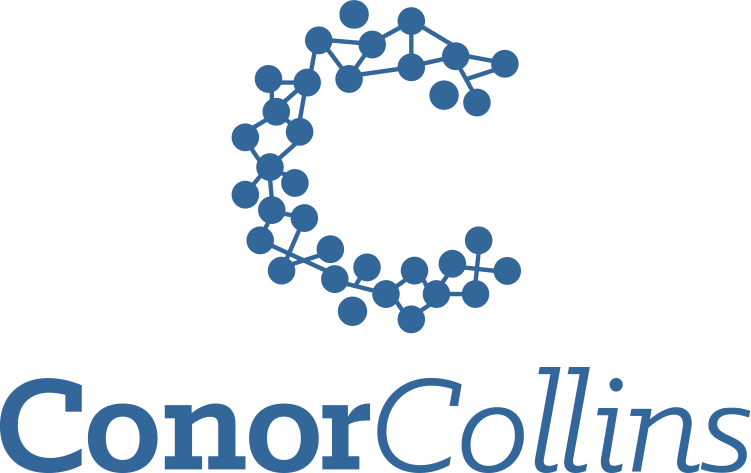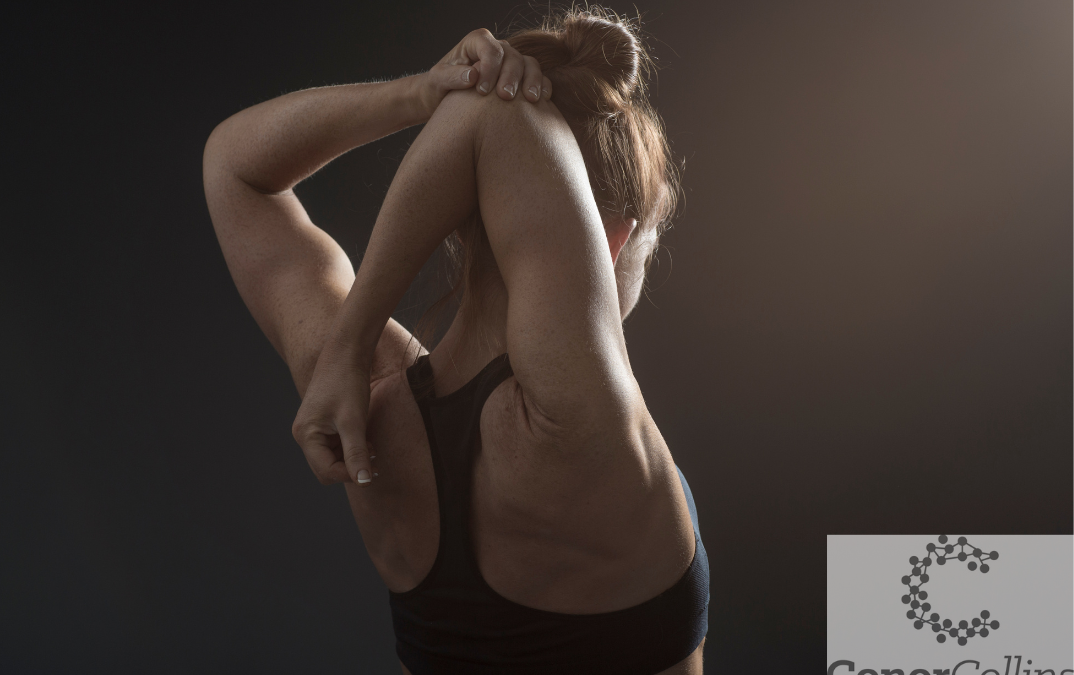This week’s guest blog is from Christin Sadler and Katheryn Cochrane
____________________________________________________________________________________
“Should I stretch?”
How often do we get asked this question from our patients? Responding can feel tricky, especially considering the prevalence of contrasting opinions on stretching promoted by both healthcare professionals, coaches, and FitFluencers. Our simple answer: just like many other remedial exercises, stretching can be a useful technique for most individuals if used in the right context. Several factors, like the type of stretch, timing of the stretch, and/or consistency of practice all seem to greatly influence the outcomes associated with a stretching exercise or routine. The most common outcome of stretching is increased range of motion (ROM) of the joint controlled by the muscle(s) targeted during a stretch; however, some forms of stretching have been associated with negative outcomes on subsequent physical performances, such as lower maximum force, power, and/or slower reaction times (Arntz et al., 2023; Behm et al., 2004, 2016). In this article we will review three common forms of stretching, and with the help of a couple systematic reviews, meta-analyses, and health guidelines, discuss some important factors to consider when recommending stretching routines to your patients.
Static stretching
Static stretching involves lengthening a muscle until a stretch sensation is felt and then holding that position for a certain period of time. Static stretching is typically the first form of stretching that comes to mind when stretching is discussed, and can be performed both actively (e.g., contracting the agonist muscle) or passively (e.g., gravity-assisted, partner-assisted, and/or using stretching aids like elastic bands). Research suggests that static stretches held for over 1 minute are more likely to result in acute (i.e., immediate) increases in ROM to the target joint when compared to static stretches held for a shorter duration (<60 seconds) and other forms of stretching (Behm et al., 2016). Importantly, static stretching held for over 1 minute is also more likely to induce detrimental effects on subsequent physical performances. In a systematic review, Behm and colleagues (2016) reported that static stretching held for >60 seconds was associated with slower sprinting, lower jump height, and weaker force outputs measured in actions performed immediately following the stretch (Behm et al., 2004, 2016). While these overall decreases in performance measures were small (average 5% decrease between pre-stretch and post-stretch measurements) and typically insignificant for the average person, it is important to consider situations in which these effects could have negative consequences. Consider the recreational athlete stretching their shoulders before entering the pool for a low-to-moderate intensity workout. Full ROM of the shoulder complex is important for the optimal execution of swimming strokes, so the risk of injury and/or negative impact on performance is low. In contrast, consider a track athlete stretching their ankles minutes prior to competing in the long jump event at the Summer Olympics. In an environment where small percentages in performance matter, static stretching in this situation has the potential to lower this athlete’s sprinting speed and jump height, which could be the difference between winning and losing. So, while static stretching is most effective for increasing ROM following a stretch, it is important to consider the other acute effects and the potential for negative impacts on any subsequent physical performances.
From a long-term perspective, consistent static stretching appears to be the most effective form of stretching to reach goals associated with increased ROM. In a recent systematic review and meta-analysis, Arntz and colleagues (2023) reported chronic static stretching (defined as static stretching performed daily for at least two weeks) increased ROM of the target joint, and both muscle strength and power measured from the targeted muscles. Importantly, these effects were more prominent (i.e., there was a larger increase in strength and power) for sedentary individuals compared to active individuals, and for older adults (65+ years) compared to younger adults (Arntz et al., 2023). The specific mechanisms behind these group differences require further investigation; however, it was suggested by the authors of the review that these results may be because sedentary individuals have a larger capacity for improvement in these measures compared to athletic individuals. Similarly, as a population, older adults generally are less active than younger adults, and therefore would probably see improvements in strength and power with any consistent remedial exercise routine.
Another form of stretching that uses static stretching is proprioceptive neuromuscular facilitation (PNF). PNF stretching is a combination of static stretching and isometric contractions that are performed in cyclical patterns. Two common techniques are contract-relax, which is a static stretch with an isometric contraction of the stretching muscle, and contract-relax-agonist-contract, which involves the addition of an isometric contraction of the agonist (i.e., the muscle opposite to the stretching muscle). PNF stretching is commonly performed with a partner or with an assistive tool (e.g., band, strap, etc.). Similar to static stretching, PNF stretching is quite effective at increasing ROM of a target joint when performed consistently as part of an exercise program (Behm et al., 2016; Konrad et al., 2023); however, PNF stretching performed immediately before intense physical activities like lifting, sprinting, or jumping may have a negative impact on performance. As previously discussed, while these effects are small, they can make a big difference under the right conditions.
To summarize, acute static or PNF stretching is useful for improving ROM around a target joint; however, it is important to consider the moment of stretching as acute static stretching may also decrease force, power, and reaction time. As such, recommending static or PNF stretching after workouts or during recovery sessions is recommended; however, if a patient prefers to stretch before a workout, suggest they perform any static stretching early/first in their warm-up protocol, followed by dynamic activation, to cancel out any negative impact on their performance. For long-term ROM improvements, encourage patients to perform static or PNF stretching daily for at least 2 weeks.
Dynamic stretching
In contrast to static and PNF stretching, dynamic stretching involves the performance of a controlled movement through the full ROM of a target joint. Dynamic stretching exercises are included in many forms of activities and therapeutic protocols (e.g., yoga, Pilates, functional range conditioning, etc.). While research suggests that static and/or PNF stretching is more effective than dynamic stretching for reaching ROM goals, dynamic stretching does not appear to have the same negative effects on subsequent physical performance. In their systematic review, Behm and colleagues (2016) reported that this may be because dynamic stretching helps prepare the body for physical activity by increasing core temperature and nervous system function. Unlike static stretching, where holding a target stretch is recommended for at least 60 seconds, dynamic stretching does not currently have a clear “dose-response relationship”, so there is no recommended timing for these stretches. The authors attributed the lack of evidence for this to the fact that most studies investigating dynamic stretching don’t report the length of time of the dynamic stretch they were measuring (Behm et al., 2016) so it’s currently impossible to draw timing conclusions from the research.
While dynamic stretching is preferred over static stretching in pre-workout routines, there is little to no evidence that dynamic stretching is a superior exercise over other dynamic exercises (Behm et al., 2016; Konrad et al., 2023). An important fact to remember is the Canadian 24-Hour Movement Guidelines recommends at least 150 minutes of moderate to vigorous aerobic activity per week (Ross et al., 2020). Dynamic stretching is typically performed at low intensity, so encourage patients to perform dynamic stretching in addition to other forms of aerobic and anaerobic exercise.
Summary
When performed consistently, all forms of stretching can increase ROM around a target joint. At present, the evidence suggests static and/or PNF stretching techniques held for over 1 minute are most effective at increasing ROM compared to dynamic stretching (Arntz et al., 2023; Behm et al., 2016; Konrad et al., 2023). Importantly, when either static and/or PNF stretching is held for over 1 minute, there is an elevated risk of negatively impacting subsequent physical performances. Static stretches should be avoided at the end of warm-up routines and replaced with various dynamic movements (e.g., jumps, squats, dynamic stretches, etc.). Stretching routines performed daily for more than 2 weeks can assist sedentary and/or older adults increase strength and power in the target muscles. There is no evidence that extra long, extra intense, or extra frequent stretching will have a greater or faster impact on ROM (Arntz et al., 2023; Behm et al., 2016; Konrad et al., 2023).
Ultimately, specific stretching suggestions for a particular patient will depend on the patient’s goals, activities, and physical fitness. It is important to remember that aside from getting enough sleep (7-9 hours for adults), exercise (150 min/ week of moderate-to-vigorous aerobic activity), and healthy foods (Ross et al., 2020), universal recommendations for optimal physical performance are rare. Health and fitness cannot be “hacked”. Stretching will not be a magic fix for every patient, but it can be a useful tool we can teach our patients in order to assist with some of their health and fitness goals.
References
Arntz, F., Markov, A., Behm, D. G., Behrens, M., Negra, Y., Nakamura, M., Moran, J., & Chaabene, H. (2023). Chronic Effects of Static Stretching Exercises on Muscle Strength and Power in Healthy Individuals Across the Lifespan: A Systematic Review with Multi-level Meta-analysis. Sports Medicine, 53(3), 723–745. https://doi.org/10.1007/s40279-022-01806-9
Behm, D. G., Bambury, A., Cahill, F., & Power, K. (2004). Effect of Acute Static Stretching on Force, Balance, Reaction Time, and Movement Time: Medicine & Science in Sports & Exercise, 36(8), 1397–1402. https://doi.org/10.1249/01.MSS.0000135788.23012.5F
Behm, D. G., Blazevich, A. J., Kay, A. D., & McHugh, M. (2016). Acute effects of muscle stretching on physical performance, range of motion, and injury incidence in healthy active individuals: A systematic review. Applied Physiology, Nutrition, and Metabolism, 41(1), 1–11. https://doi.org/10.1139/apnm-2015-0235
Konrad, A., Alizadeh, S., Daneshjoo, A., Anvar, S. H., Graham, A., Zahiri, A., Goudini, R., Edwards, C., Scharf, C., & Behm, D. G. (2023). Chronic effects of stretching on range of motion with consideration of potential moderating variables: A systematic review with meta-analysis. Journal of Sport and Health Science, S2095254623000571. https://doi.org/10.1016/j.jshs.2023.06.002
Ross, R., Chaput, J.-P., Giangregorio, L. M., Janssen, I., Saunders, T. J., Kho, M. E., Poitras, V. J., Tomasone, J. R., El-Kotob, R., McLaughlin, E. C., Duggan, M., Carrier, J., Carson, V., Chastin, S. F., Latimer-Cheung, A. E., Chulak-Bozzer, T., Faulkner, G., Flood, S. M., Gazendam, M. K., … Tremblay, M. S. (2020). Canadian 24-Hour Movement Guidelines for Adults aged 18–64 years and Adults aged 65 years or older: An integration of physical activity, sedentary behaviour, and sleep. Applied Physiology, Nutrition, and Metabolism, 45(10 (Suppl. 2)), S57–S102. https://doi.org/10.1139/apnm-2020-0467



Recent Comments